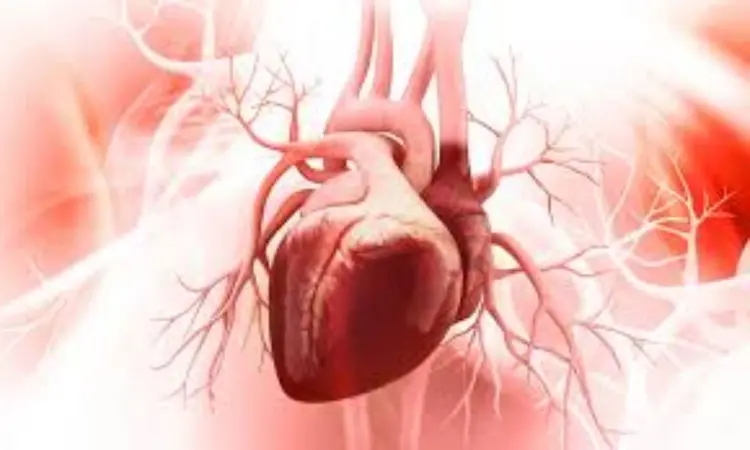- Home
- Medical news & Guidelines
- Anesthesiology
- Cardiology and CTVS
- Critical Care
- Dentistry
- Dermatology
- Diabetes and Endocrinology
- ENT
- Gastroenterology
- Medicine
- Nephrology
- Neurology
- Obstretics-Gynaecology
- Oncology
- Ophthalmology
- Orthopaedics
- Pediatrics-Neonatology
- Psychiatry
- Pulmonology
- Radiology
- Surgery
- Urology
- Laboratory Medicine
- Diet
- Nursing
- Paramedical
- Physiotherapy
- Health news
- Fact Check
- Bone Health Fact Check
- Brain Health Fact Check
- Cancer Related Fact Check
- Child Care Fact Check
- Dental and oral health fact check
- Diabetes and metabolic health fact check
- Diet and Nutrition Fact Check
- Eye and ENT Care Fact Check
- Fitness fact check
- Gut health fact check
- Heart health fact check
- Kidney health fact check
- Medical education fact check
- Men's health fact check
- Respiratory fact check
- Skin and hair care fact check
- Vaccine and Immunization fact check
- Women's health fact check
- AYUSH
- State News
- Andaman and Nicobar Islands
- Andhra Pradesh
- Arunachal Pradesh
- Assam
- Bihar
- Chandigarh
- Chattisgarh
- Dadra and Nagar Haveli
- Daman and Diu
- Delhi
- Goa
- Gujarat
- Haryana
- Himachal Pradesh
- Jammu & Kashmir
- Jharkhand
- Karnataka
- Kerala
- Ladakh
- Lakshadweep
- Madhya Pradesh
- Maharashtra
- Manipur
- Meghalaya
- Mizoram
- Nagaland
- Odisha
- Puducherry
- Punjab
- Rajasthan
- Sikkim
- Tamil Nadu
- Telangana
- Tripura
- Uttar Pradesh
- Uttrakhand
- West Bengal
- Medical Education
- Industry
Simple score useful to identify transthyretin amyloid cardiomyopathy in HFpEF patients

USA: Transthyretin amyloid cardiomyopathy (ATTR-CM) is a type of heart failure with preserved ejection fraction (HFpEF). ATTR-CM can be diagnosed with the help of technetium Tc 99m pyrophosphate scintigraphy (PYP). There is no clarity on which HFpEF patients have sufficient risk of ATTR-CM to warrant PYP.
Based on the above, in a recent study, researchers from the US aimed to derive and validate a simple ATTR-CM score for predicting increased ATTR-CM risk in HFpEF patients. The study, published in JAMA Cardiology, found a simple 6-variable clinical score useful for guiding PYP use and increasing ATTR-CM recognition in patients with HFpEF.
Daniel R. Davies, Department of Cardiovascular Medicine, Mayo Clinic, Rochester, Minnesota, and colleagues conducted a retrospective cohort study. It included 666 patients with HF (ejection fraction ≥ 40%) and suspected ATTR-CM referred for PYP at Mayo Clinic, Rochester, Minnesota, from May 10, 2013, through August 31, 2020.
Data analysis was done from September 2020 through December 2020. A logistic regression model that predicted ATTR-CM was derived and translated to a point-based ATTR-CM risk score. Further validation of the score was done in a community ATTR-CM epidemiology study of older HFpEF patients with increased left ventricular wall thickness ([WT] ≥ 12 mm) and in an external (Northwestern University, Chicago, Illinois) HFpEF cohort referred for PYP.
Self-reporting of the race was done by all the participants. Both case and control patients were discovered by specialist evaluation and PYP scanning.
The study's main outcome was the performance of the derived ATTR-CM score in all cohorts (community validation, referral validation, and external validation) and a high-risk ATTR-CM score prevalence in 4 multinational HFpEF clinical trials.
The key findings of the study were as follows:
- Participant cohorts included were referral derivation (n = 416; ATTR-CM prevalence = 45%), referral validation (n = 250; ATTR-CM prevalence = 48%), community validation (n = 286; ATTR-CM prevalence = 6%), and external validation (n = 66; ATTR-CM prevalence = 39%).
- Score variables included age, male sex, hypertension diagnosis, relative WT more than 0.57, posterior WT of 12 mm or more, and ejection fraction less than 60% (score range −1 to 10).
- Discrimination (area under the receiver operating characteristic curve [AUC] 0.89) and calibration (Hosmer-Lemeshow; χ2 = 4.6) were strong.
- Discrimination (AUC ≥ 0.84) and calibration (Hosmer-Lemeshow χ2 = 2.8; Hosmer-Lemeshow χ2 = 4.4; Hosmer-Lemeshow χ2 = 2.5 in referral, community, and external validation cohorts, respectively) were maintained in all validation cohorts.
- Precision-recall curves and predictive value vs. prevalence plots indicated clinically useful classification performance for a score of 6 or more (positive predictive value ≥25%) in clinically relevant ATTR-CM prevalence (≥10% of patients with HFpEF) scenarios.
- In the HFpEF clinical trials, 11% to 35% of male and 0% to 6% of female patients had a high-risk (≥6) ATTR-CM score.
"A simple, 6-variable clinical score may help identify patients with suspected HFpEF who are at increased ATTR-CM risk and should undergo an additional clinical evaluation to identify or exclude ATTR-CM," the researchers wrote.
"ATTR-CM is a form of HFpEF with a specific etiology that is underrecognized and has specific and highly effective therapy. Further validation is needed for this score," they conclude.
Reference:
Davies DR, Redfield MM, Scott CG, et al. A Simple Score to Identify Increased Risk of Transthyretin Amyloid Cardiomyopathy in Heart Failure With Preserved Ejection Fraction. JAMA Cardiol. Published online September 07, 2022. doi:10.1001/jamacardio.2022.1781
Dr Kamal Kant Kohli-MBBS, DTCD- a chest specialist with more than 30 years of practice and a flair for writing clinical articles, Dr Kamal Kant Kohli joined Medical Dialogues as a Chief Editor of Medical News. Besides writing articles, as an editor, he proofreads and verifies all the medical content published on Medical Dialogues including those coming from journals, studies,medical conferences,guidelines etc. Email: drkohli@medicaldialogues.in. Contact no. 011-43720751


